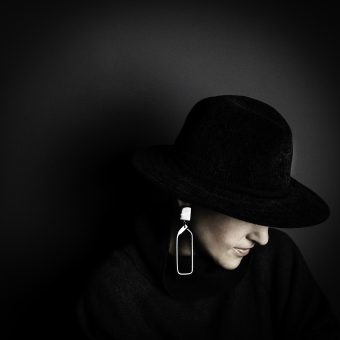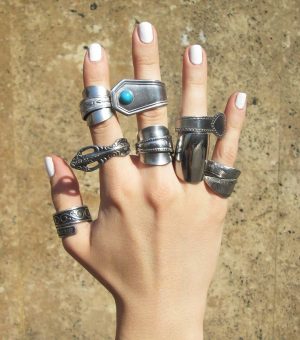
Every home has items that will end up as waste in the future. Some are intended for one-time use, and among others, there are those with a lifetime of several decades. Those belonging to family heirlooms are kept in some corner of the house for sentimental reasons and wait for the day when their owner will simply throw them away.
If the perspective of old things were changed, the reality could look like this—if objects that we no longer need end up, instead of being thrown away, in the hands of the right person, they can get another chance and the possibility of being usable. Among such things is the old cutlery, which is often woven with handwork through unique patterns, and new generations are replacing it with simpler and more modern sets. By changing the angle of its observation, when the antique cutlery ends up in the hands of Milica Radan Jovanović and her husband Slobodan, it becomes a unique jewelry and brand—SikiliFrik.
Milica started making this kind of jewelry almost 15 years ago when looking for something to last a lifetime. Upcycling or reshaping old cutlery into jewelry is inspiring for her. One of the biggest challenges at the beginning of creating jewelry is the nature and type of material used. It requires a special tool. Although very demanding to process, inox, stainless steel, various types of steel and chrome are also the main advantage of this type of jewelry because stainless steel does not cause allergies, will not corrode, and is easy to maintain.
IN FOCUS:
- HOW TO PROPERLY MANAGE ENERGY CONSUMPTION
- CHARGE&GO CONTINUES TO BUILD A NETWORK OF CHARGER
- HOW TO DEVELOP ELECTROMOBILITY FASTER

A constant challenge in the work is the continuous search for even more beautiful, older, and interesting pieces of cutlery. At the beginning of production, the necessary material was purchased at flea markets and online stores such as Limundo and Kupindo. Today, six years later, more and more people are contacting our interlocutor to hand over their cutlery to be made into jewelry. However, the invention still requires a lot of effort.
– The whole process starts with the already mentioned search. When we find something interesting to us to process, the transformation follows. Before we start reshaping, we perform one of the most important stages in the process: cleaning. It includes washing, boiling, and disinfection of cutlery. Then comes the design of what we would make from the obtained material, and only then we go to the workshop. When the material reaches the workshop, it is measured, drawn, cut, drilled, bent, and polished. It is often necessary to heat certain pieces so that we can bend them. Milica explains that certain products are ready for use after polishing, and some, such as necklaces, earrings and bracelets, also have a joining phase—adding links, buckles, chains, and others.
She is aware of the need to contribute to environmental protection.
Prepared by: Katarina Vuinac
Read the story in the new issue of the Energy portal Magazine ELECTROMOBILITY.



